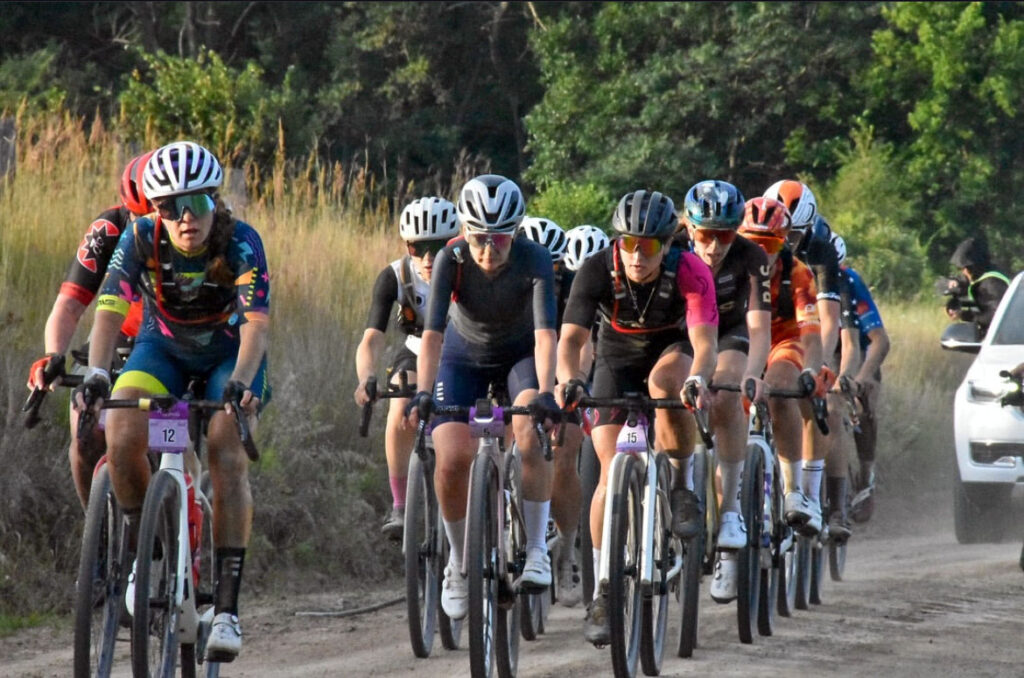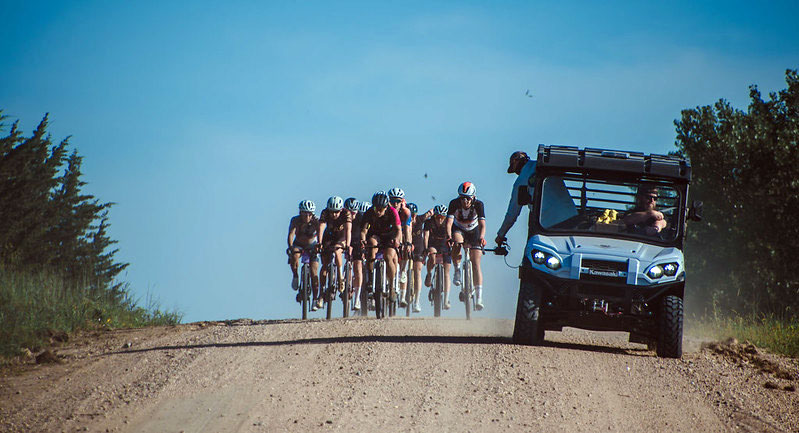Why Women Want to Race Against Women
One reason behind the popularity of gravel racing is that it treats female riders as equals to men. That is a big break from traditional racing that used to focus on men first and foremost—women were either completely ignored or treated as an afterthought. Throughout history, a few women have tried to compete with the men. Exactly 100 years ago, Alfonsina Strada entered the 1924 Giro d’Italia. Her entry was accepted to create news stories in a year when the champions were boycotting the Giro in a battle over appearance money. Alfonsina Strada finished the 3,613 km race, albeit outside the time limit. When she applied to race the Giro again the following year, no doubt hoping to build on her hard-earned experience, the organizers turned her down. They had come to an agreement with the top teams and didn’t need Alfonsina Strada any longer.
Things were better among the British time trailists, where there were fewer barriers to women racing. Beryl Burton set the overall 12-hour record in 1967—and famously offered the leading male rider a piece of liquorish as she passed him. In France, the randonneurs have accepted women as equals from the earliest days, and Lyli Herse’s exploits were legendary. But those were exceptions—for the most part, bicycle competition was of men, for men, and by men. To their credit, many race organizers in North America have tried to put female racing on equal footing for many years, albeit often with limited success.
Then came gravel… With its fun-loving, grass-roots vibe, everybody rode and raced together: pros and amateurs, men and women. And this led to some of the biggest stars being female—riders like Lael Wilcox, Lauren de Creszenzo and Sofia Gomez Villafane. But racing with men also introduced problems: To win, female racers usually had to find a fast group of men to work with and distance the other women that way. Conversely, if a female rider attacked alone, chasers often reeled her in by working with groups of men. As the fields of professional women racers have got bigger, more and more organizers are separating the women’s pelotons from the men’s. One of these was Gravel Worlds in Nebraska last month. The pro women started the 150-mile race ten minutes after the pro men and 25 minutes in front of the amateur men. To add an incentive toward keeping the fields separate, the organizers added $ 500 of prize money for every woman who made it to the 86-mile checkpoint without getting caught by the men.
Marisa Boaz (Mazda Orange Seal; first in the photo below) finished 6th and penned her thoughts and impressions after the race:

My favorite part? Getting to have an actual women’s race. Having our own start enabled us to have our own race. Nearly every part of the race was different. Tactics were actually used (which is so cool!). Women rode and raced with and against women. In the entirety of my race, no men were involved. Women could attack and break away. Women had to chase down women. Women had to draft women. I suppose there’s going to be a learning curve for the women’s peloton as a whole, but it’s awesome to be a part of it. I believe we will only get better.

Moving forward, I can see how a ‘no-drafting men’ rule could change the dynamics of the women’s race even further. In this race, we had an incentive of a whopping $500 dollars for every women to get to Mile 86 without being caught by the amateur men from behind. In the early stages of the race, I didn’t think we would make it, because not many were working, and we were going relatively slow. I thought our peloton was just going to wait for the men to come by and latch on to them. I’m glad this didn’t happen. [Eventual winner] Lauren Stephens put in a strong attack, fireworks went off, and we had a race. As the miles were ticking down and riders were dropping off the back, I found myself worrying that those women would get brought back by the men coming from behind. Luckily that never happened. But it can happen. So I’d like to see a rule like, ‘no drafting men to bring you back to other women,’ or ‘no drafting men to bring you back into the top 10.’ Just some thoughts.

How is the racing dynamic different with an all-women’s race versus a mixed start? There are so many ways it’s different! The mixed start of a race is typically chaotic, where positioning and high power efforts will help you make a selection with the fastest men possible. Drafting then becomes key, to save energy and avoid burning matches for the rest of the race. Every moment a woman can stay with a faster/stronger group will make a significant difference that compounds as the race progresses. A lot of times in these mixed starts, you have no idea what position you are in. Are there women up ahead? How many? Sometimes volunteers will tell you what position you are in among the women, but often you are racing with just a vague idea of where you are in the race.
If your group has other women in it, it can be hard to get away and attack the other women, because strong men will sit on your wheel. I’ve also been in several races where men (whether they be friends, partners or teammates) are clearly working for women. I’ve seen men lead women out for sprint finishes, and I’ve been put in the gutter on a crosswind section where a man is leaving only enough room for a woman to benefit. I’ve also seen men carrying supplies for women so that the women didn’t need to stop at an aid station. It doesn’t happen all the time, but I’ve seen it enough to know it has impacted the results of races. Men can heavily influence the result of the women. That’s how racing has been.

In contrast, the dynamic of the race changes when the elite women have their own start, and organizers allow for a large enough time gap to the start of the amateur men. Then women are actually racing women. The starts are less chaotic and more welcoming. Tactics orchestrated by women become key to winning the race and having a good result. Not only can we as racers see what is happening in our own race, but spectators can also see our race unfold—which is exciting! More spectators will undoubtedly lead to the growth of women’s cycling.

At gravel events where the elite women’s field is large and the level of competition is high, a separate start for the women is a positive step forward in the development of women’s cycling. Other women and little girls will see women racing women, and it will expand their horizons. Visions and dreams will be created, and more women will come to the sport and experience the joys of cycling. —Marisa Boaz
Further reading:
Photos: Clare Paniccia (reprinted with permission)



